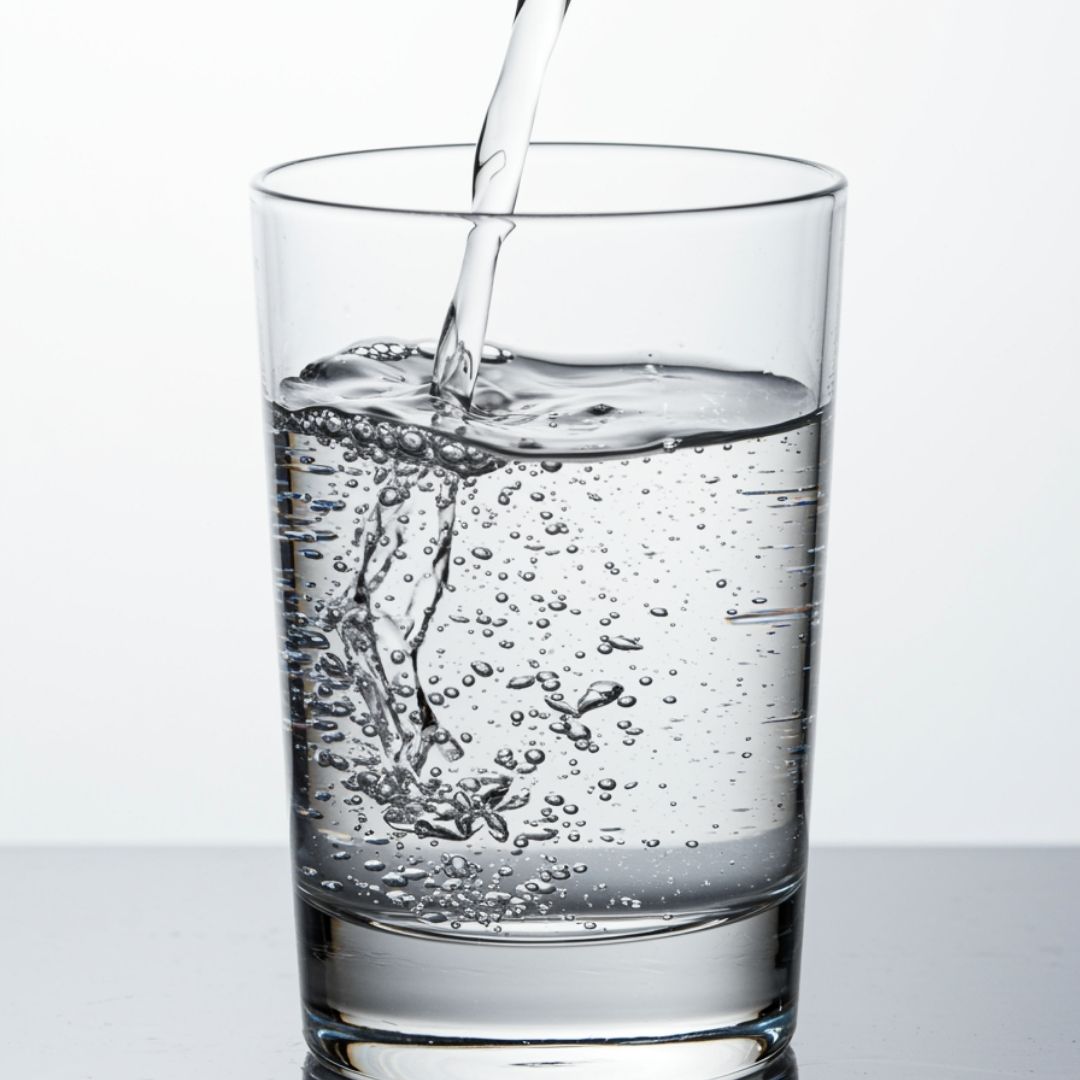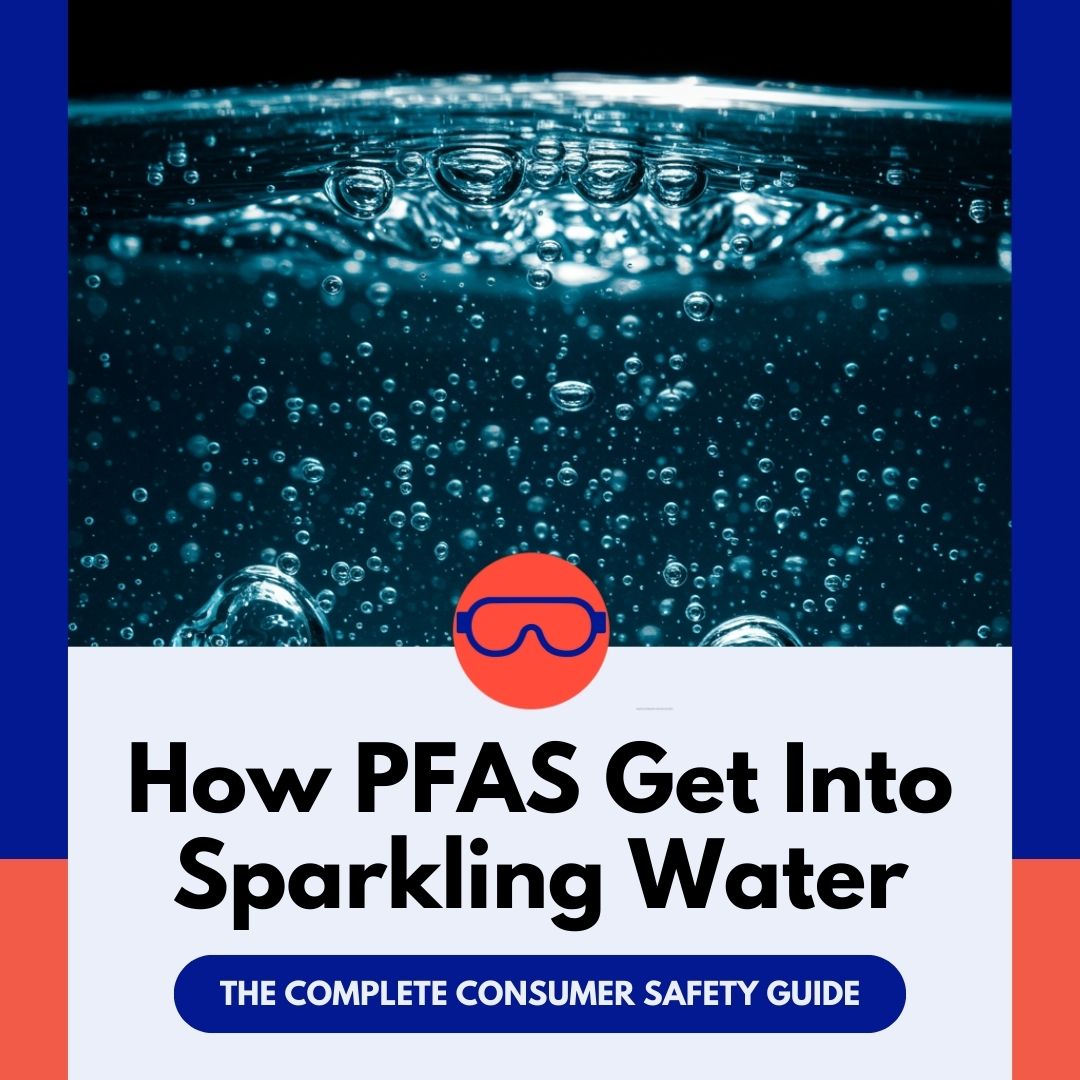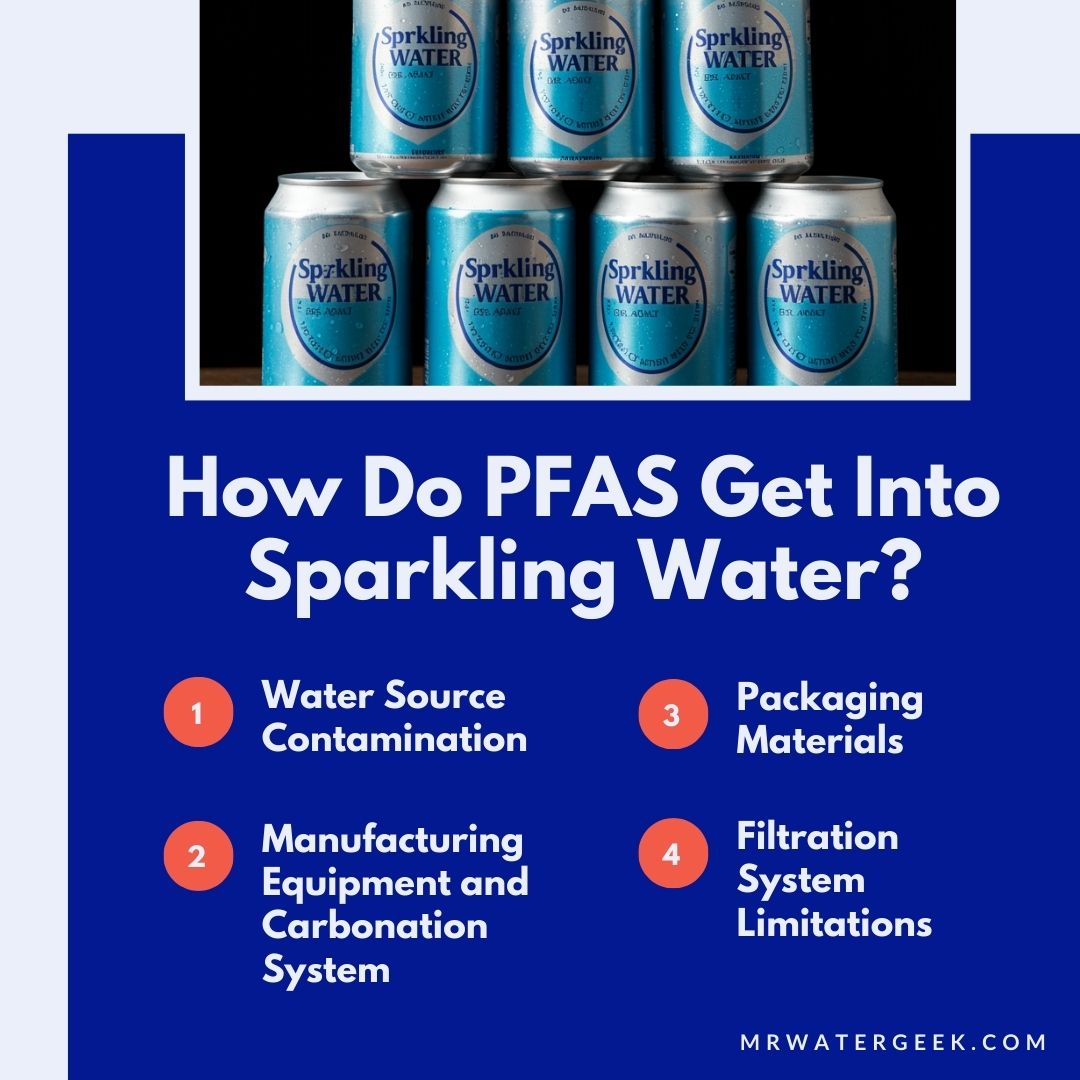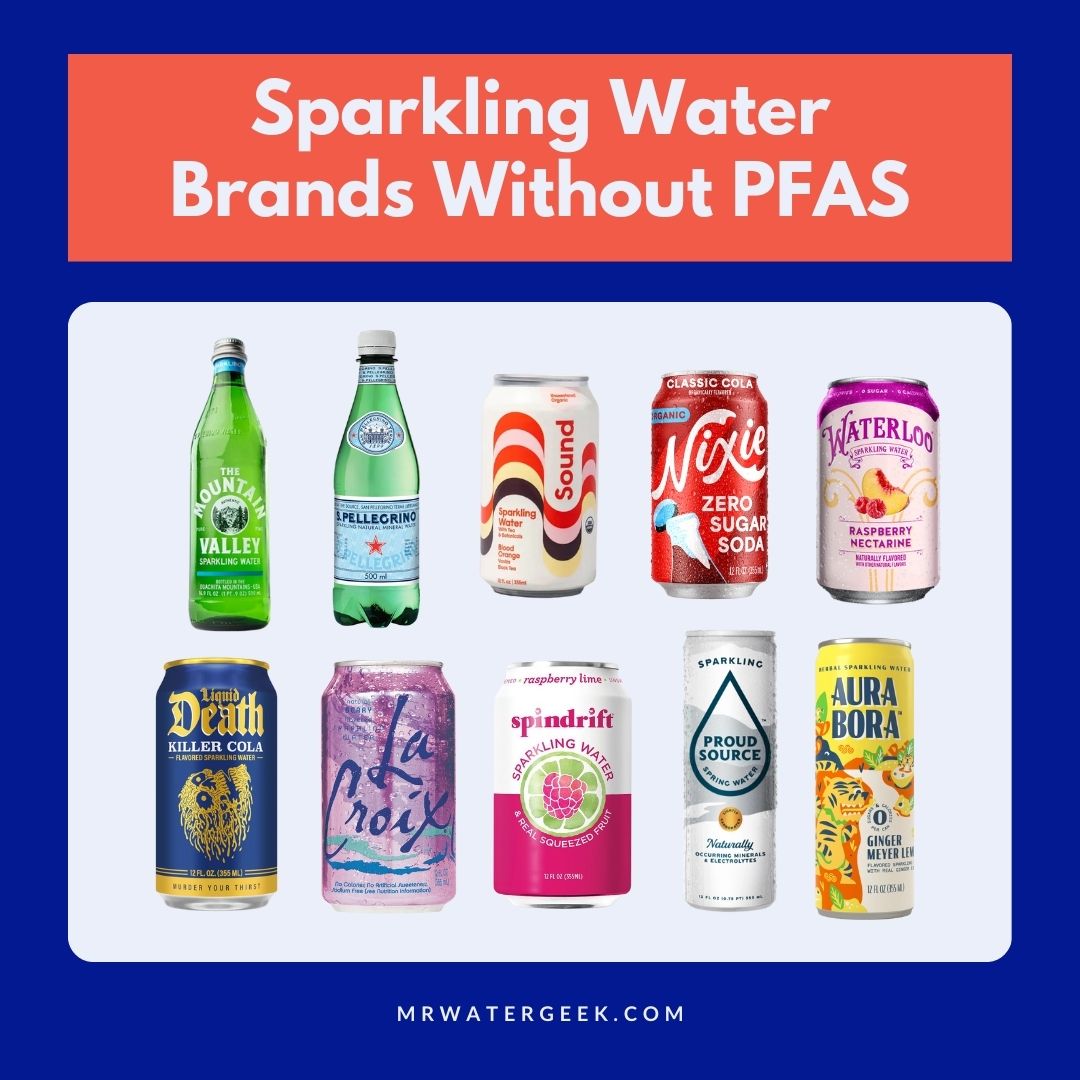How PFAS Get Into Sparkling Water: The Complete Consumer Safety Guide

That refreshing fizz of your go-to sparkling water may be hiding an unwanted guest. Polyfluoroalkyl substances (PFAS) are a group of man-made chemicals known for all the wrong reasons. These persistent compounds have been associated with serious health risks like elevated cholesterol level, reduced vaccine response, liver damage, and even some cancers.
What’s especially alarming about these chemicals is how they build up in the human body. They don’t get flushed out of your system the way many other contaminants do. It’s for this reason that PFAS have picked up the ominous nickname “forever chemicals.”
PFAS can be found in non-stick cookware, stain-resistant fabrics, and firefighting foam. However, discovering them in your favorite beverage is an entirely different concern. Though manufacturers have been excluding certain PFAS, some sparkling water brands have tested positive for these chemicals in recent studies.
So today, I want to explain how PFAS wind up in sparkling water and how to steer clear of them.

How PFAS Get Into Sparkling Water
In this post, I’ll clarify the confusion about whether or not your sparkling water (including natural seltzer water or lemon lime sparkling seltzer water) could be harmful due to chemicals like PFAS. You’ll find out exactly how PFAS makes its way into carbonated beverages, what you can do to reduce your potential exposure to PFAS while still enjoying your bubbly drinks, and more.
Does Sparkling Water Have PFAS?
Research has detected varying levels of PFAS in some sparkling water brands, while others tested completely clean. A Consumer Reports analysis showed measurable PFAS levels in popular brands, including Topo Chico sparkling mineral water, which had higher concentrations than many competitors. The study found PFAS levels vary widely, with carbonated water products reporting levels between less-than 1 part per trillion (ppt) and over 10 ppt. These levels are below the set maximum contaminant level for drinking water by the Environmental Protection Agency (EPA). Nevertheless, many health experts say there is no level of these persistent chemicals that can be considered entirely safe.
Meanwhile, check out this post: BEWARE of These Side Effects of Drinking Mineral Water for other key elements you should know about drinking mineral water.

How Do PFAS Get Into Sparkling Water?
PFAS don’t find their way into your bubbly drinks by magic. They sneak in through certain pathways during sourcing, production, and packaging.
Water Source Contamination
Water is the most direct route of PFAS contamination. Many sparkling water producers brag about their pure mountain springs or artesian wells. But, even natural sources can be contaminated with PFAS. They leach into groundwater from industrial sites, airports, or military bases that use firefighting foam. Municipal water sources, used by some manufacturers, can also contain low levels of PFAS. This may happen if local treatment plants don’t use filtration methods like reverse osmosis that can effectively remove the chemicals.
Manufacturing Equipment and Carbonation System
The carbonation process itself is not usually a source of PFAS, but the equipment used to carbonate the drinks could be. PFAS-containing parts or lubricants are also found in some industrial machines, especially older equipment built before awareness of the chemicals grew. During high-pressure carbonation, these materials can leach small amounts of PFAS, measured in parts per trillion (ppt), into the water flowing through the system.
Packaging Materials
Perhaps the most insidious source of PFAS contamination is the food packaging containers themselves. PFAS are synthetic chemicals valued for their grease- and water-repellent properties, often used in food-contact materials. They can be found in aluminum can coatings, plastic bottle linings, and even label ink. Over time, PFAS may leach into sparkling water, increasing contamination as the product sits.
Filtration System Limitations
Most sparkling water manufacturers use general filtration systems that were not specifically designed to remove PFAS. Activated carbon filters may reduce some PFAS, but they don’t remove all types of PFAS. The only approaches that remove the full range of PFAS compounds are advanced methods such as reverse osmosis or high-pressure membrane filtration. Without using these specialized filtration techniques, brands can end up inadvertently letting these chemicals pass into their final products.
Worried about how to drink water safely? Check out these posts to find out:
- What is “Healthy Water” and Which Is The Healthiest?
- Clever Easy Ways To Drink More Water
- What Happens If You Drink Too Much Water?
Which Sparkling Water Has No PFAS?
Spindrift
Flavor-wise and chemical-wise, Spindrift comes in with stellar marks, registering only 0.19 ppt PFAS (parts per trillion). This is well below the 1 ppt threshold that’s considered safe for the human body.
La Croix
La Croix has made a name for itself with its crisp, bubbly sparkling water. Their product is triple-filtered and canned using non-BPA linings. Tests by independent firms show that their products contain either undetectable PFAS or negligible levels that are well below any health advisory limits set by the Environmental Protection Agency (EPA).
Sound
Sound periodically records zero detectable PFAS chemicals in their water. They also save us from seltzer flavor monotony with inventive combinations like lemon with thyme and white tea and rose with lime and hibiscus tea.
Liquid Death
Liquid Death uses aluminum cans with special linings designed to avoid chemical leaching. Their adverts are specifically based on purity claims, They have also established themselves as an environmentally-friendly alternative to traditional bottled water options.
Waterloo
Their BPA-free cans contain ultra-filtered water that’s sourced regionally. As such, their sparkling water is not only hydrating, but also environmentally-friendly.

Aura Bora
Their sparkling waters are reverse-osmosis filtered (essential for PFAS removal), free from citric acid (which can cause stomachaches or headaches), and packaged in infinitely-recyclable aluminum cans.
Nixie
Nixie steer clear of added artificial solvents or preservatives. Instead, they are unique among competitors by flavoring with only USDA organic ingredients. And the difference is striking in their flavor profiles (think peach and black tea or strawberry hibiscus), all made with reverse osmosis filtered water (which removes PFAS chemicals).
Mountain Valley
Thanks to their commitment to testing and monitoring water sources on a regular basis, Mountain Valley sparkling water genuinely delivers on its promises. They’ve been recording non-detectable PFAS repeatedly, a feat not many water brands can boast of.
San Pellegrino
San Pellegrino has an almost undetectable PFAS level; at 0.31 ppt, it falls within the safe range. It has a largely uses glass bottles, limiting PFAS exposure from packaging. Their water passes naturally through limestone and is carbonated with 100% natural and volcanic carbon dioxide without compromising the mineral integrity or introducing impurities.
Proud Source
Proud Source is true to its name, pledging to report annually on their bottled water’s superior quality and mineral-rich source in infinitely recyclable bottles. Year-after-year, Proud Source has been producing BPA-free sparkling water. They’ve also ingeniously crafted an aluminum bottle that keeps your water cooler for longer.
Understanding the presence of PFAS in sparkling water helps you make informed decisions about what you drink.
Understand PFAS risks in sparkling water and choose safer options by reading labels, researching brands, and staying informed on water quality.
For more information on sparkling water, check out my previous post: “Tonic Water Vs Sparkling Water: Key Differences and Benefits.”
Also, if you’re looking for more product reviews, how-to guides, and helpful posts on all things water, be sure to check out my blog. I’m always happy to help!
Stay cool & stay hydrated,
Shashank Varma (Mr. Water Geek)
